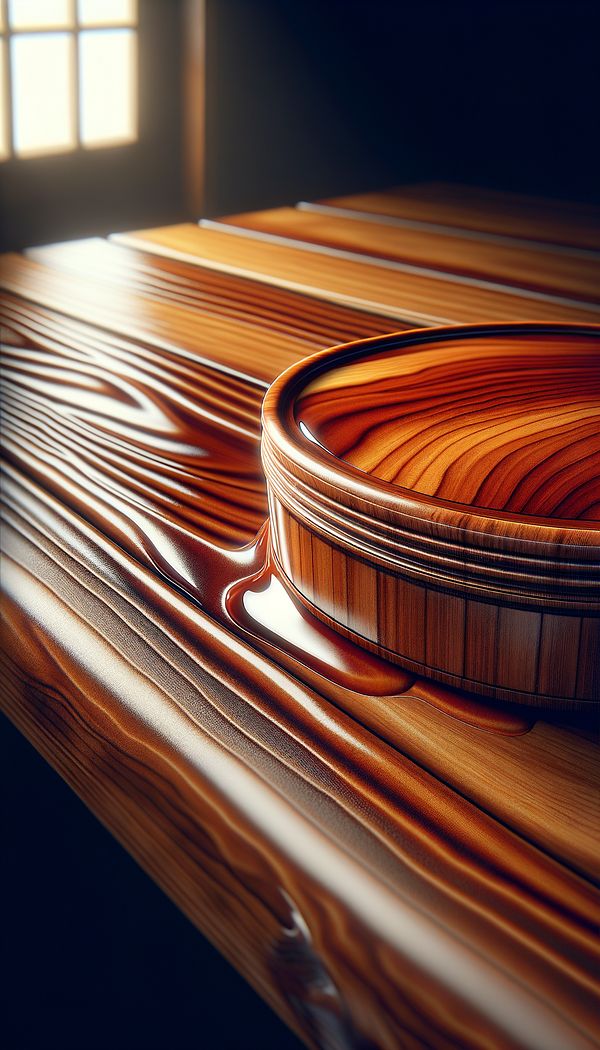What is Shellac?
Shellac is a natural resin used as a wood finish and sealer in interior design.
Description
Shellac is a versatile finish derived from the secretions of the female lac bug, found in the forests of India and Thailand. It's processed and sold as dry flakes that are dissolved in alcohol to make liquid shellac, which can be applied to wood surfaces. Shellac dries to a hard, shiny finish, making it ideal for protecting and enhancing the beauty of wood furniture, flooring, and panelling.
One of the remarkable qualities of shellac is its ability to be applied over almost any other finish, allowing for easy use in restoration projects. It's also prized for its fast-drying characteristics and its natural origin, making it a favorite among environmentally conscious designers and homeowners. Shellac finishes can range from a clear to a rich, amber tone, depending on the type used, offering flexibility in aesthetic outcomes.
Apart from its beauty and protective qualities, shellac is also known for its ease of repair. Unlike polyurethane or varnish, shellac can be easily touched up or repaired without having to strip and refinish the entire piece, making it a practical choice for items that see frequent use or may be prone to wear and tear. However, it's worth noting that shellac is not as durable as some synthetic finishes and can be susceptible to damage from water and alcohol.
Usage
Shellac is commonly used in the restoration and finishing of antique furniture, where its natural composition and ease of application make it ideal for maintaining the original charm of the piece. It's also used in new furniture making, particularly in pieces where a classic, high-gloss finish is desired. In addition to furniture, shellac can be applied to wood panelling and flooring, providing a protective layer that enhances the wood's natural beauty.
FAQs
-
Is shellac suitable for all types of wood?
Shellac can be applied to most types of wood, but its performance may vary depending on the wood's natural oils and porosity. It's advisable to test shellac on a small area first.
-
Can shellac be colored or tinted?
Yes, shellac can be tinted with dyes or pigments to achieve a variety of colors. This makes it a flexible option for matching or enhancing the color of wood surfaces.
-
Is shellac eco-friendly?
Yes, shellac is considered eco-friendly due to its natural origin and the minimal processing involved in its production. It's a renewable resource that doesn't involve the use of petroleum-based ingredients.
-
How long does shellac take to dry?
Shellac dries relatively quickly, usually within an hour. However, it's recommended to wait at least 24 hours before using or handling the finished piece to ensure it's fully cured.
-
Can shellac finishes be repaired easily?
Yes, one of the benefits of shellac is that it can be easily touched up or repaired without having to strip the original finish. This makes it a convenient choice for items that might need frequent repairs.
Practical Application
When applying shellac, it's essential to work in a well-ventilated area due to the alcohol solvent. Use a high-quality brush or a French polishing technique for the best results. Shellac can be applied in multiple thin coats, lightly sanding between coats for a smoother finish. Regular maintenance includes dusting and occasionally cleaning with a damp cloth, avoiding exposure to water and alcohol to maintain the finish's integrity.
-
Furniture Types599 articles
-
Decorative Techniques322 articles
-
Wall & Ceiling Treatments35 articles
-
Sustainability & Eco-Friendly Design69 articles
-
CoverletA coverlet is a lightweight, decorative bedspread.
-
TrivetA trivet is a stand or support used to hold hot pots, dishes, or serving bowls to protect surfaces from heat damage.
-
GouacheGouache is a type of paint known for its opaqueness and matte finish.
-
Spring DownSpring down is a premium cushion type that incorporates coiled springs wrapped in foam and encased within a feather-down mix or synthetic fiber, offering both comfort and support.
-
Book MatchBook Match refers to a mirror-like reflection technique used in the placing of two matching surfaces.
